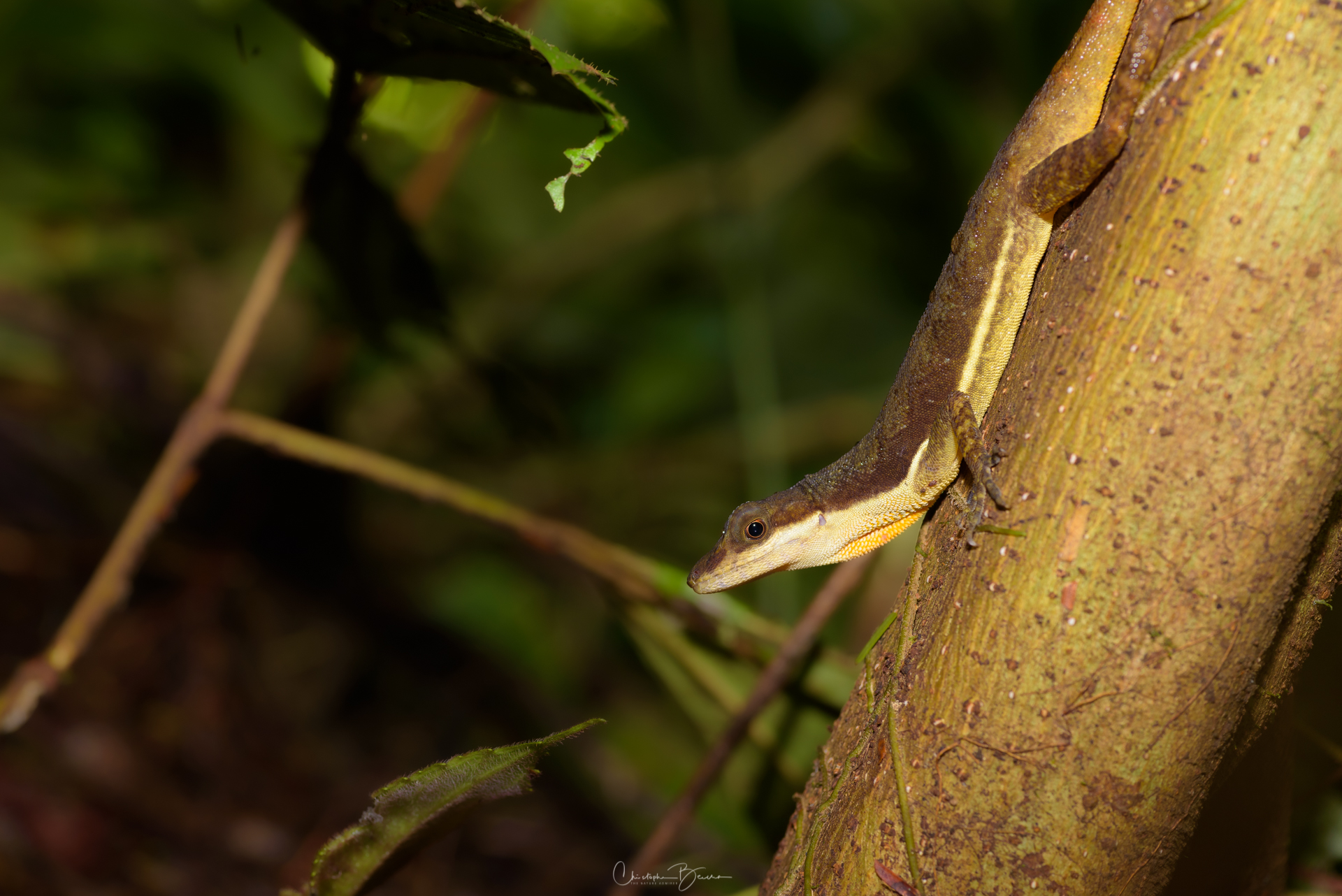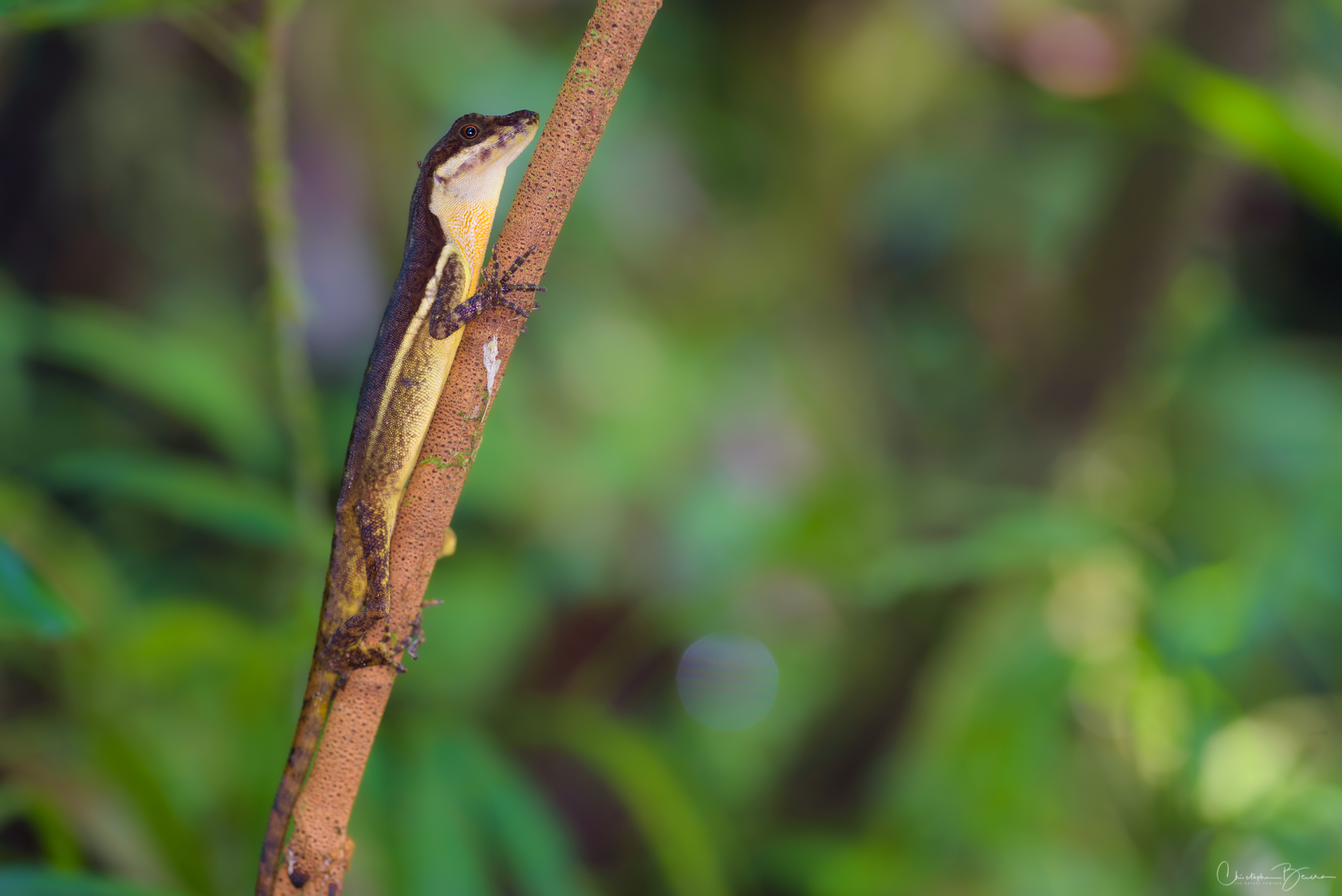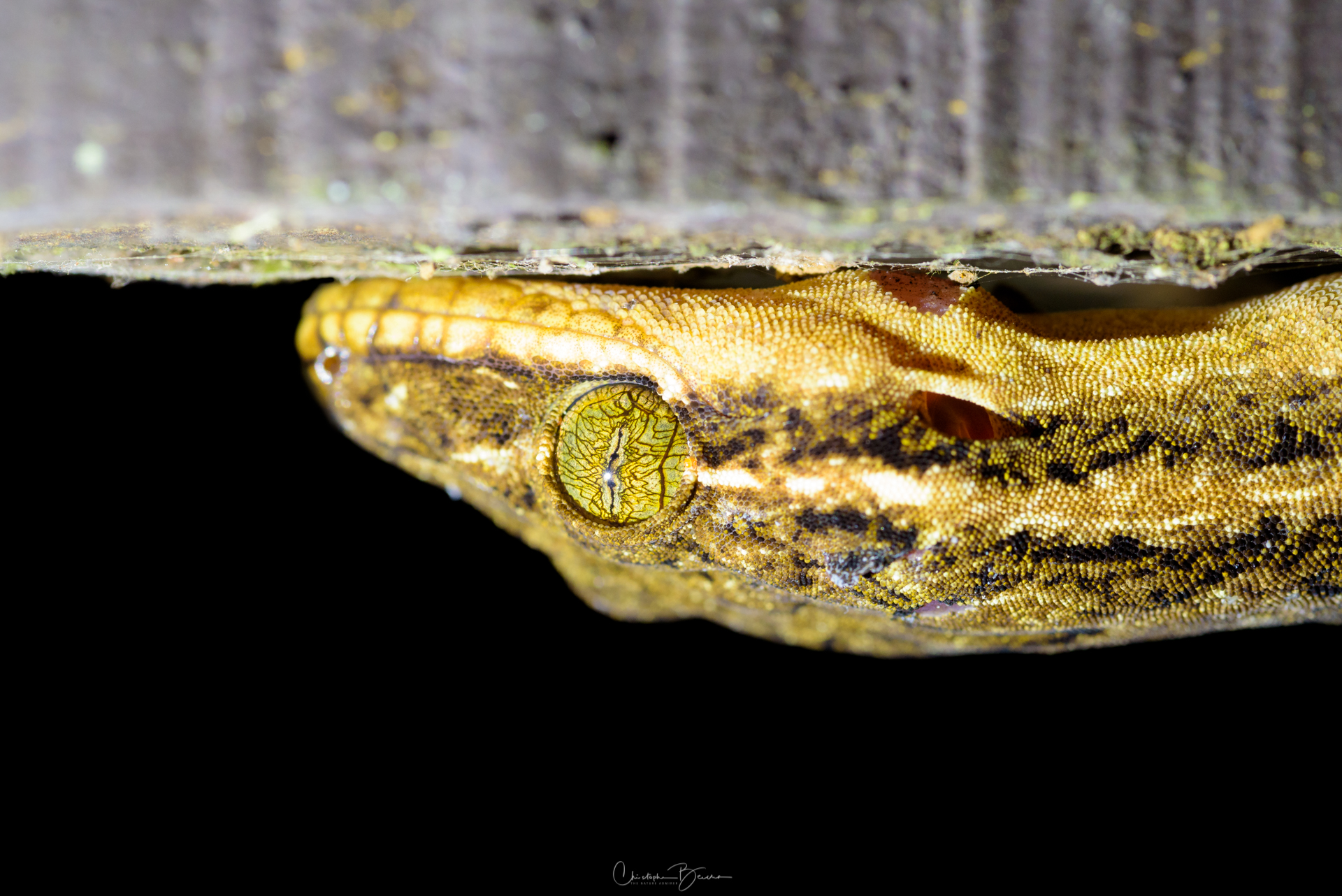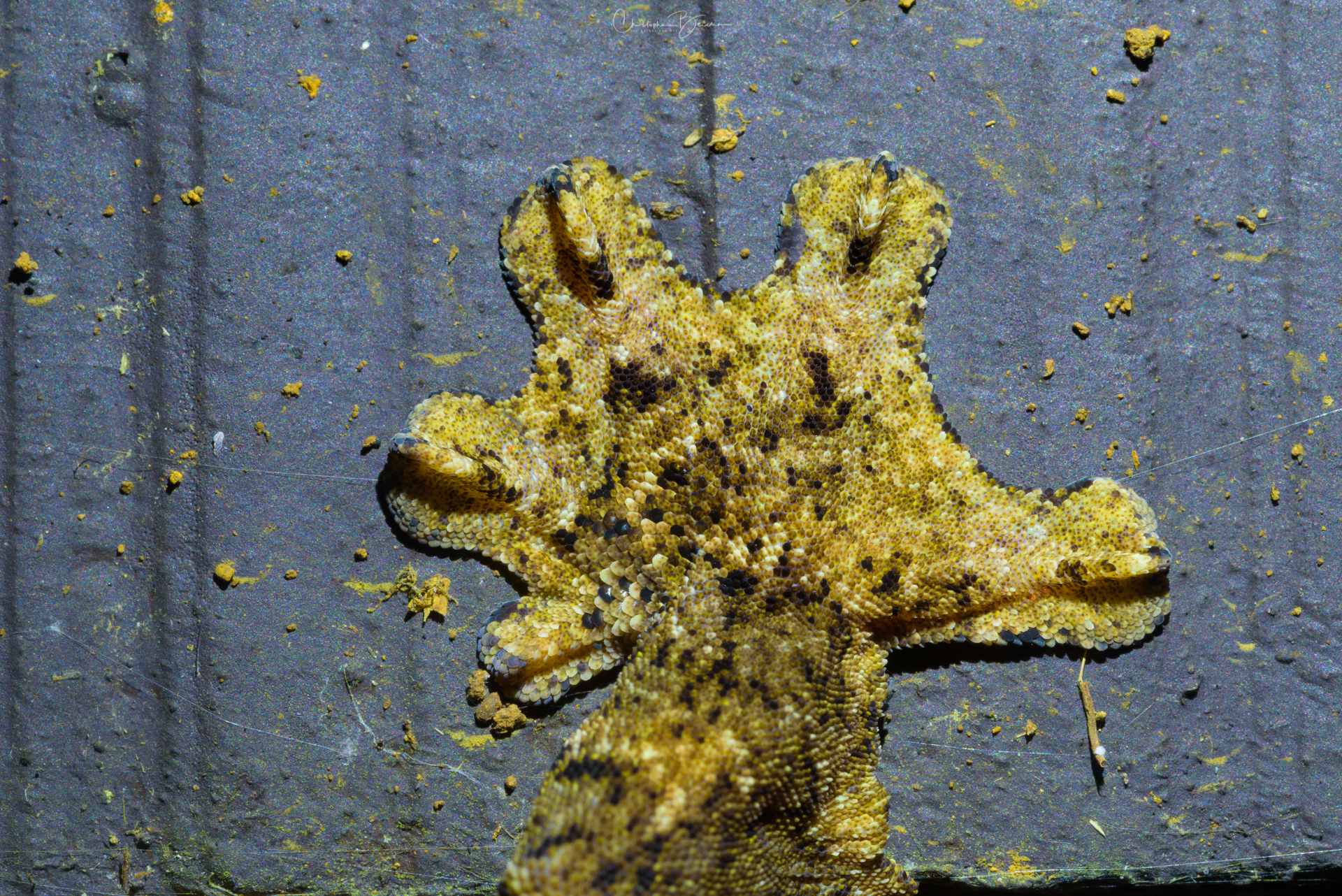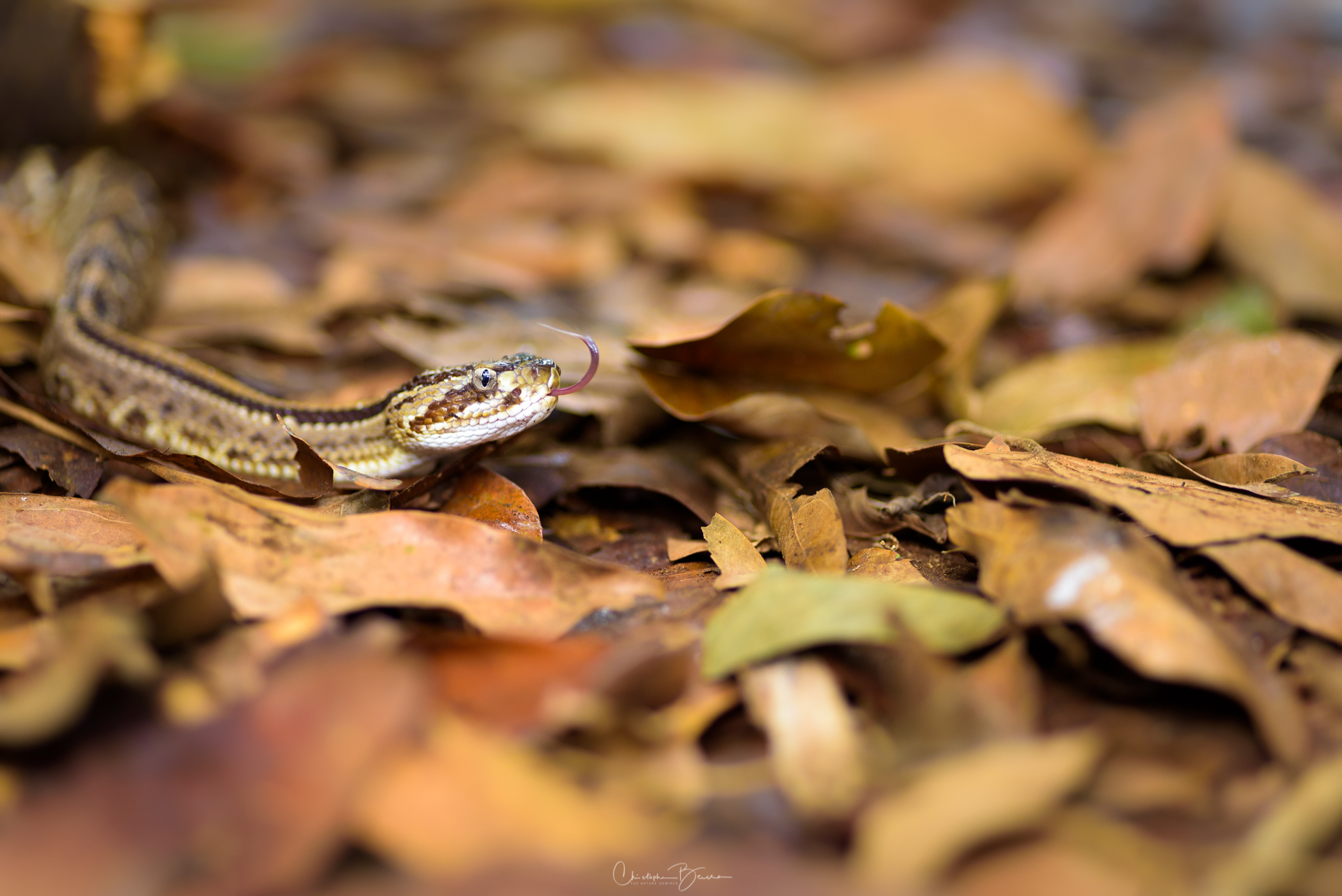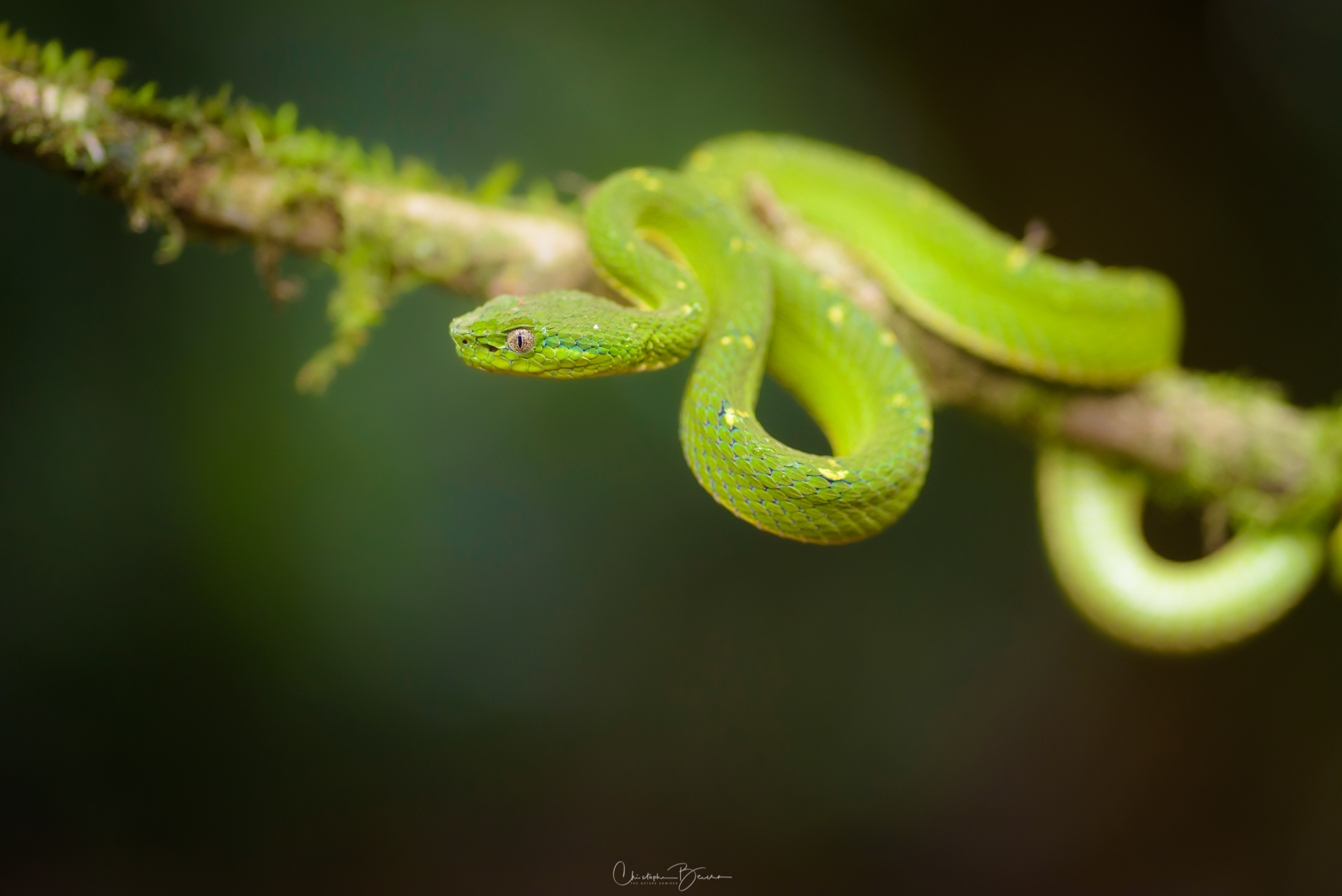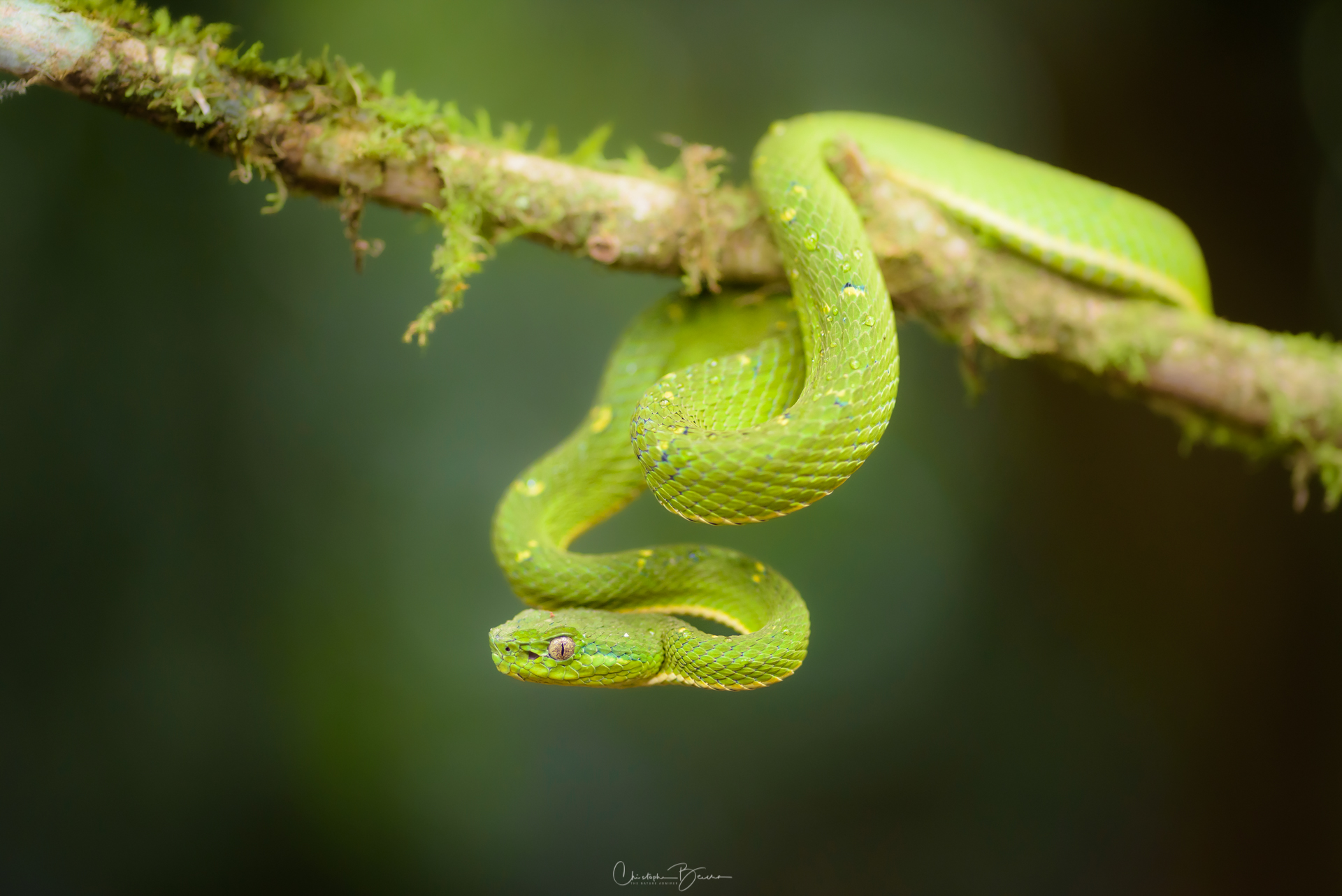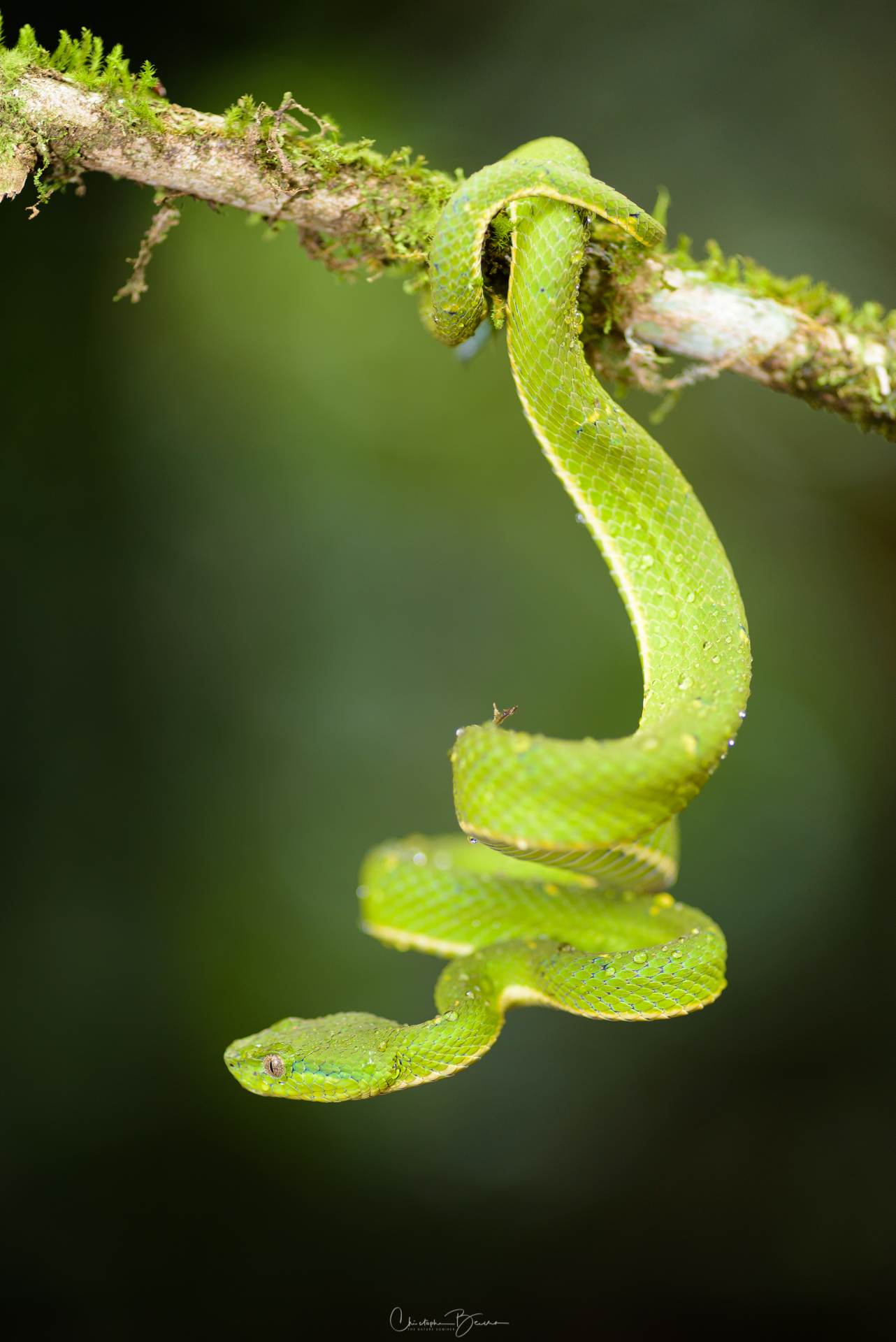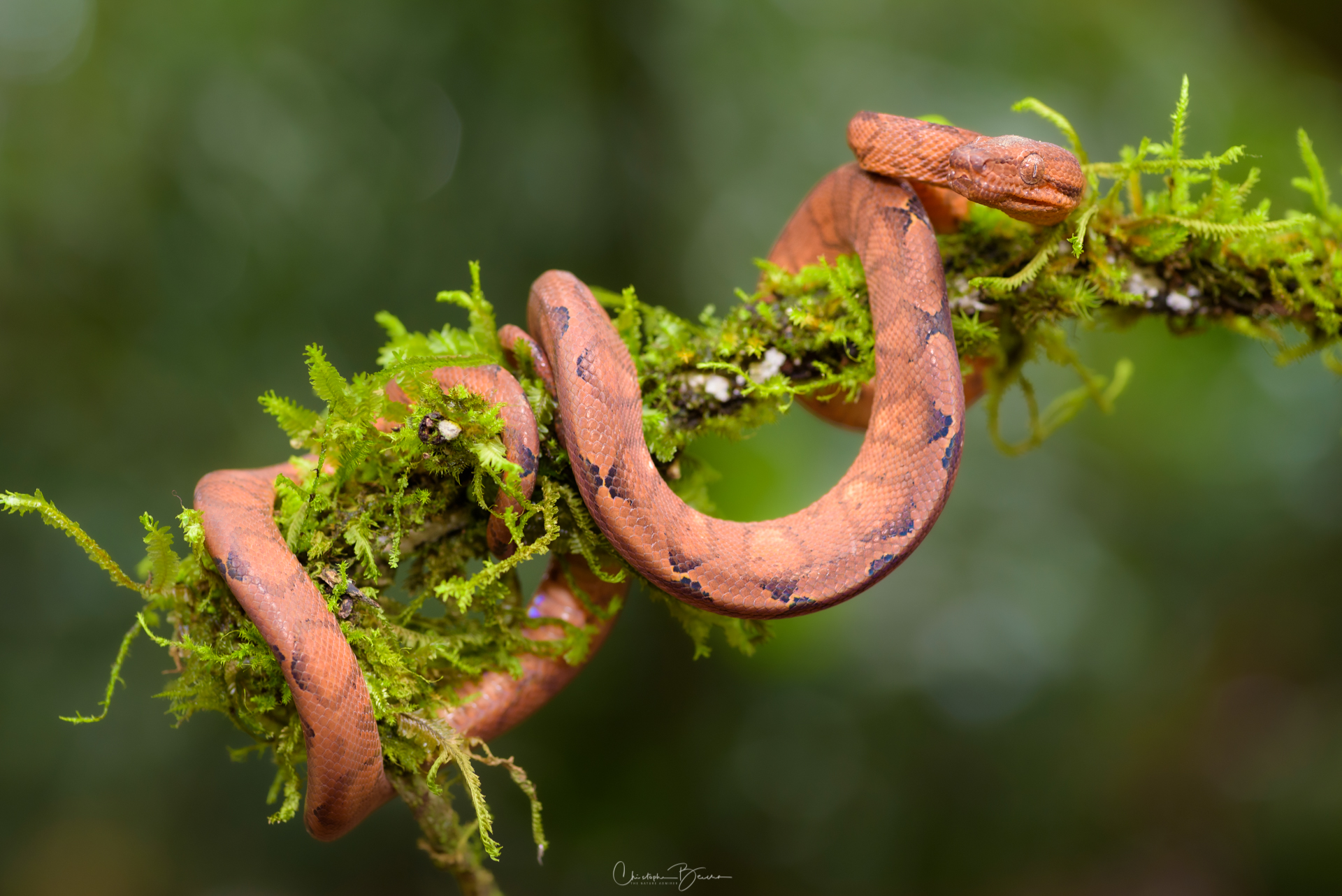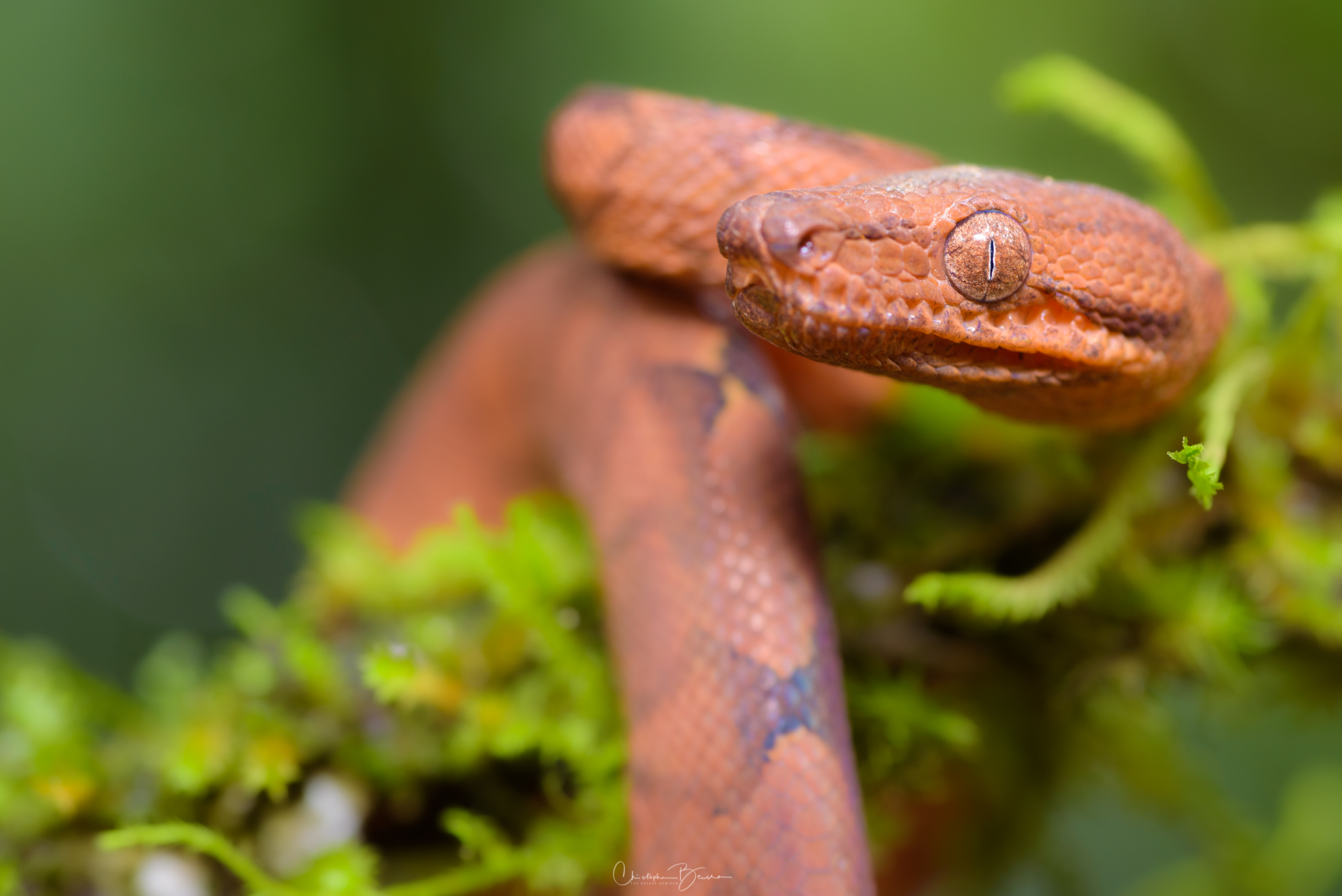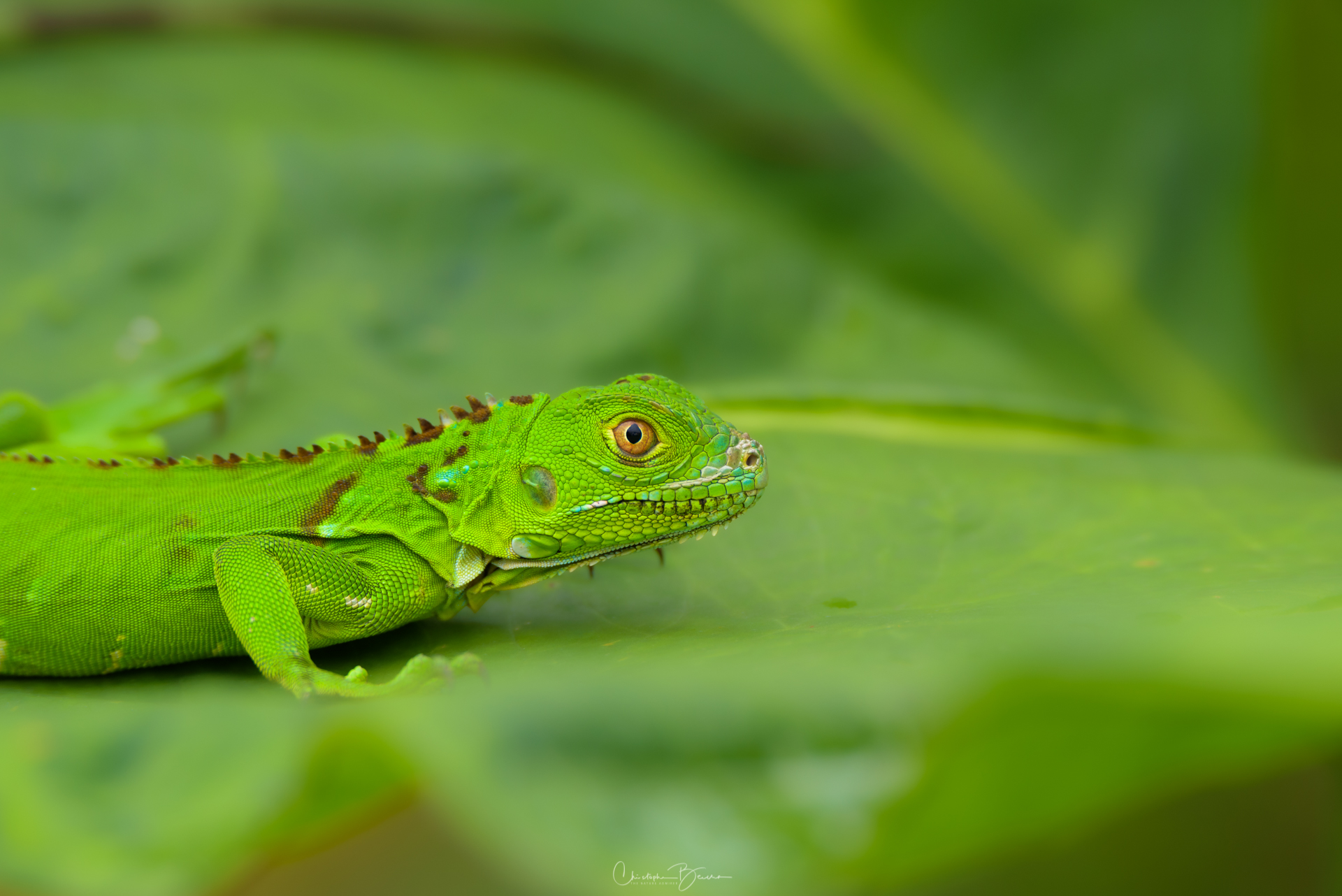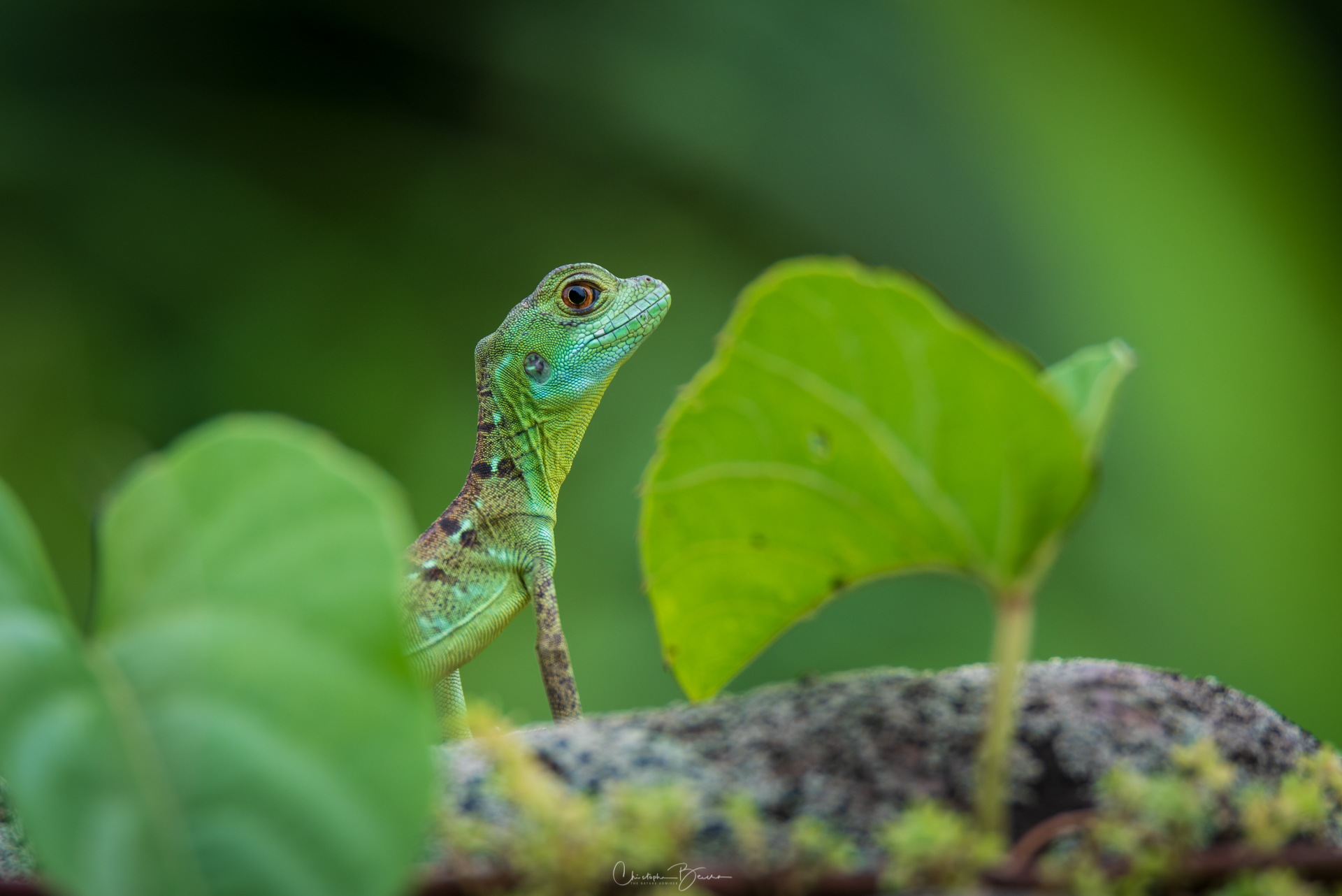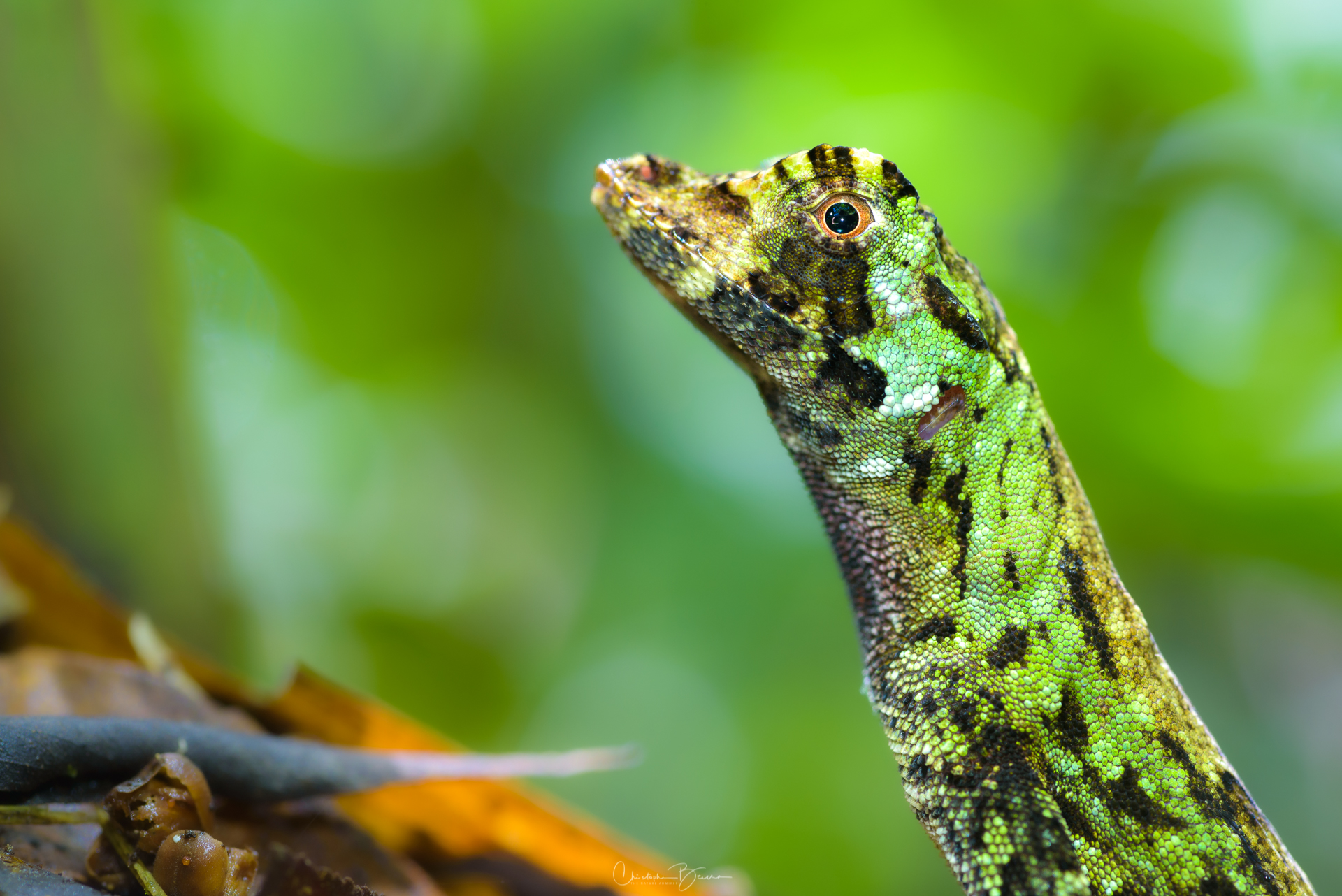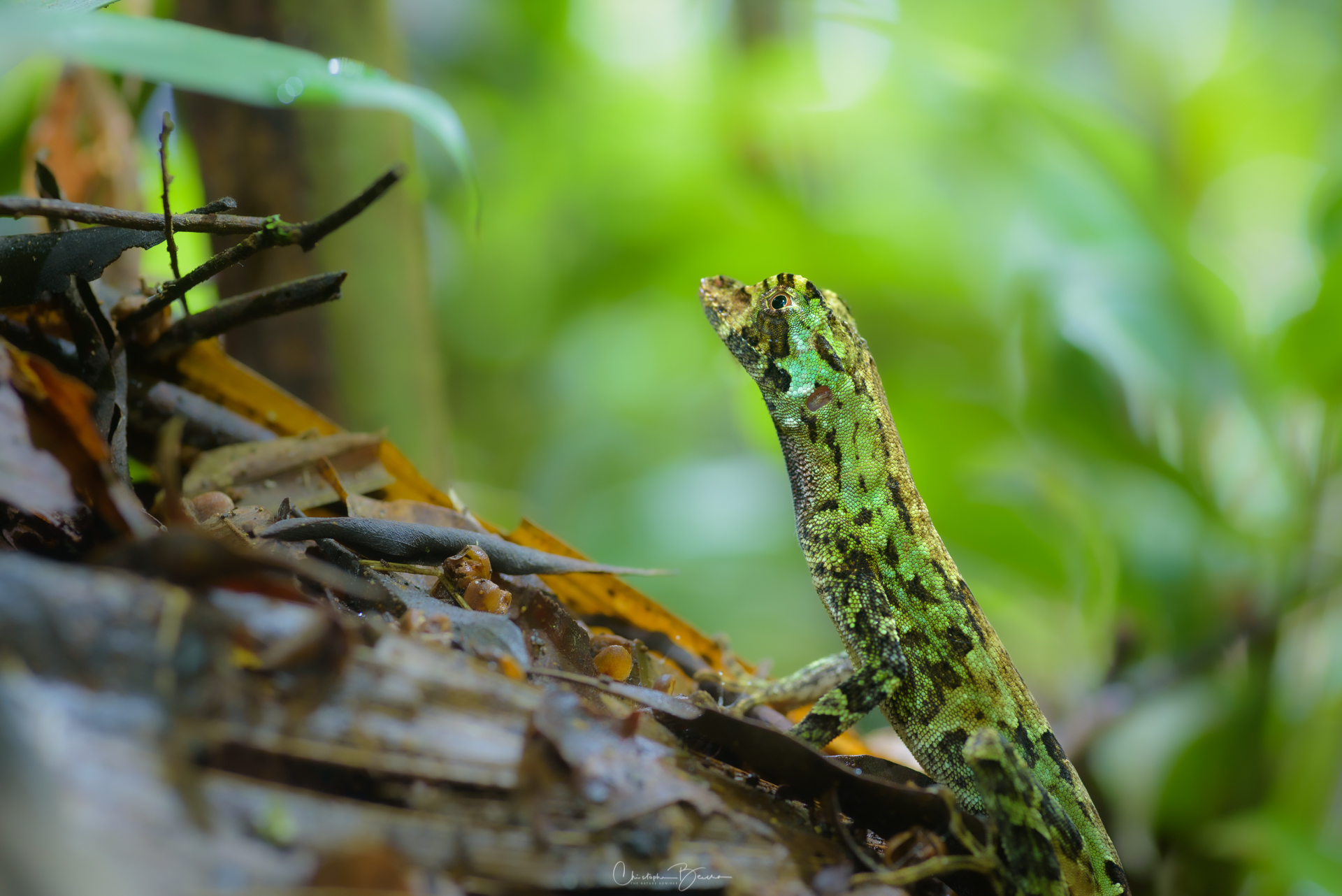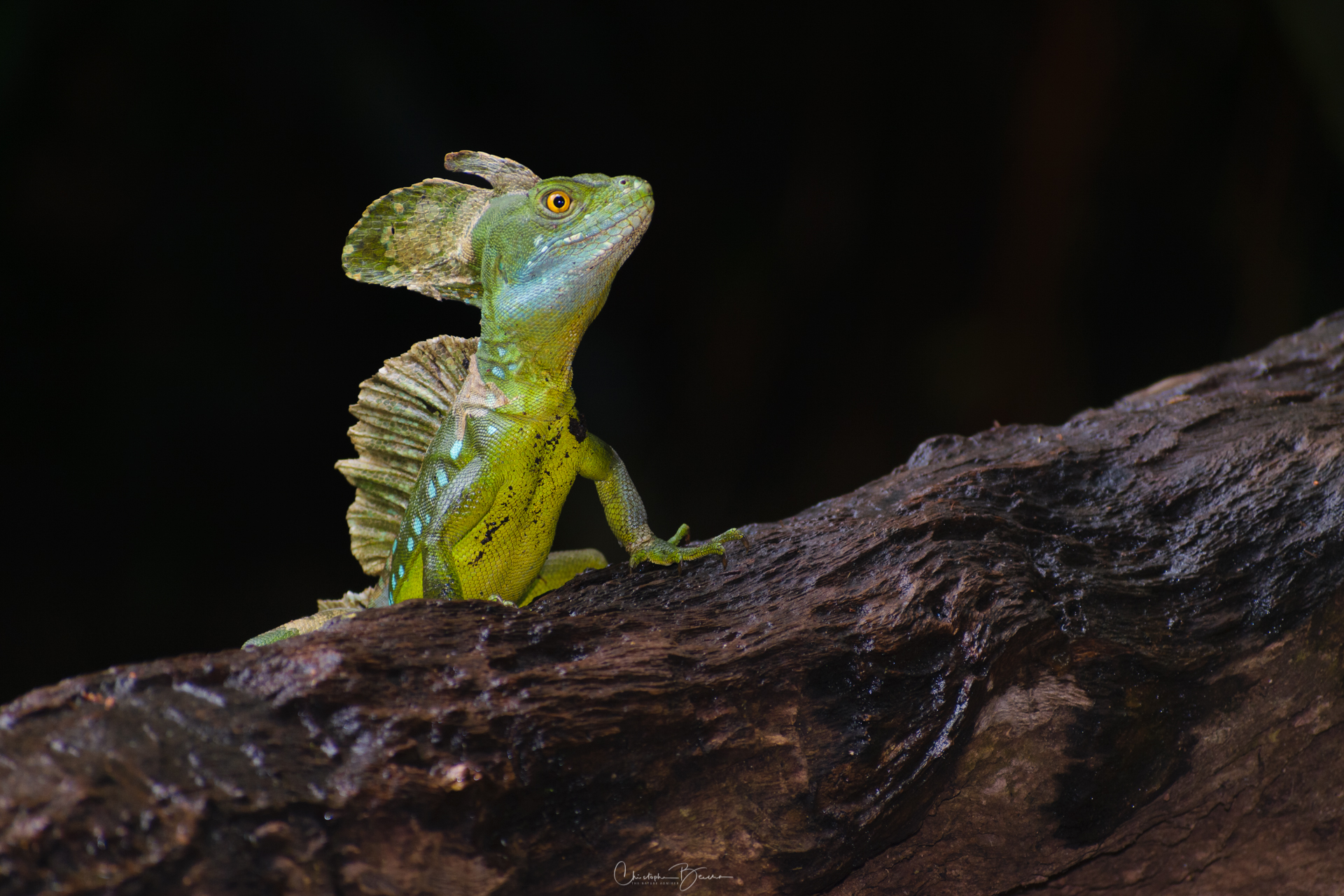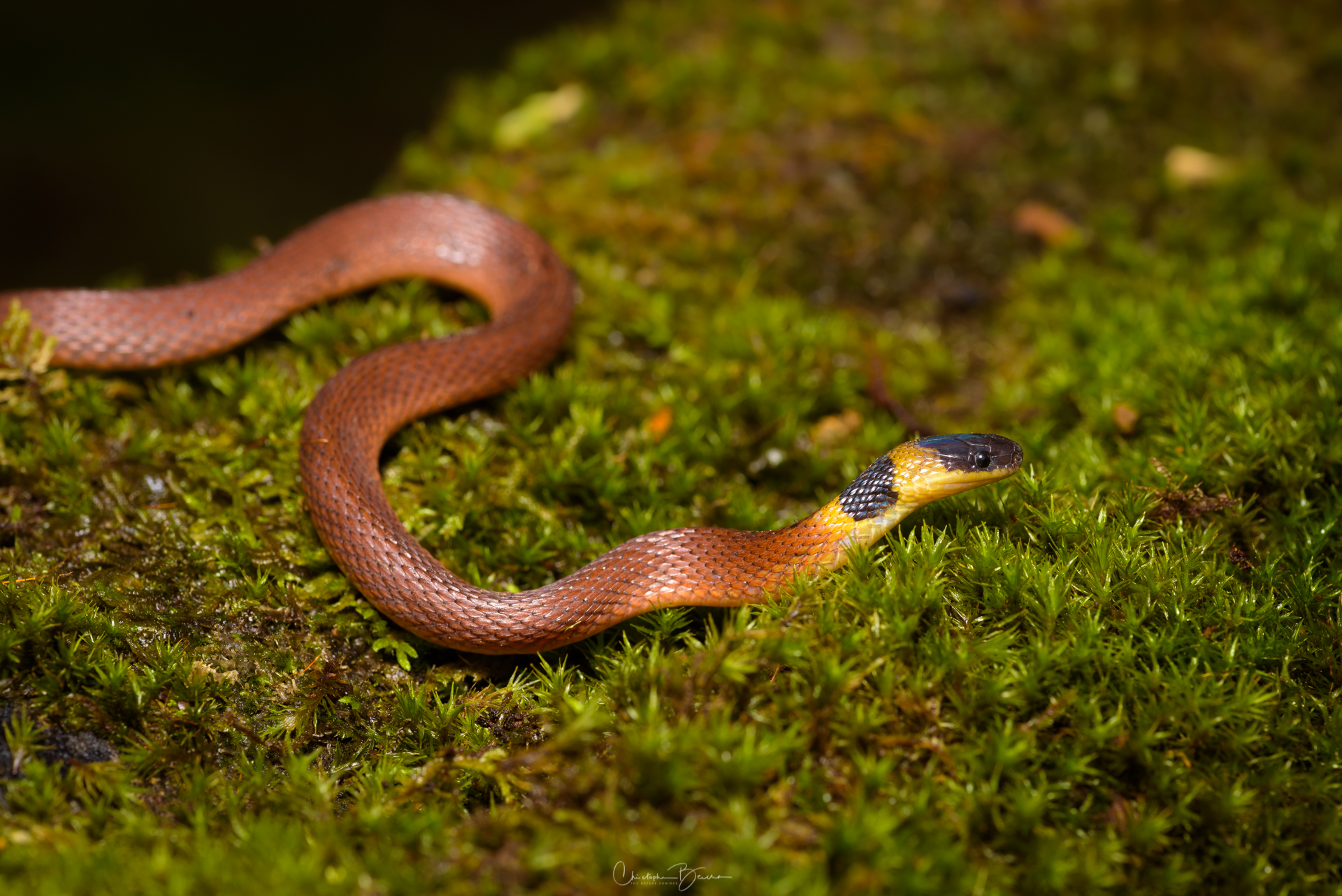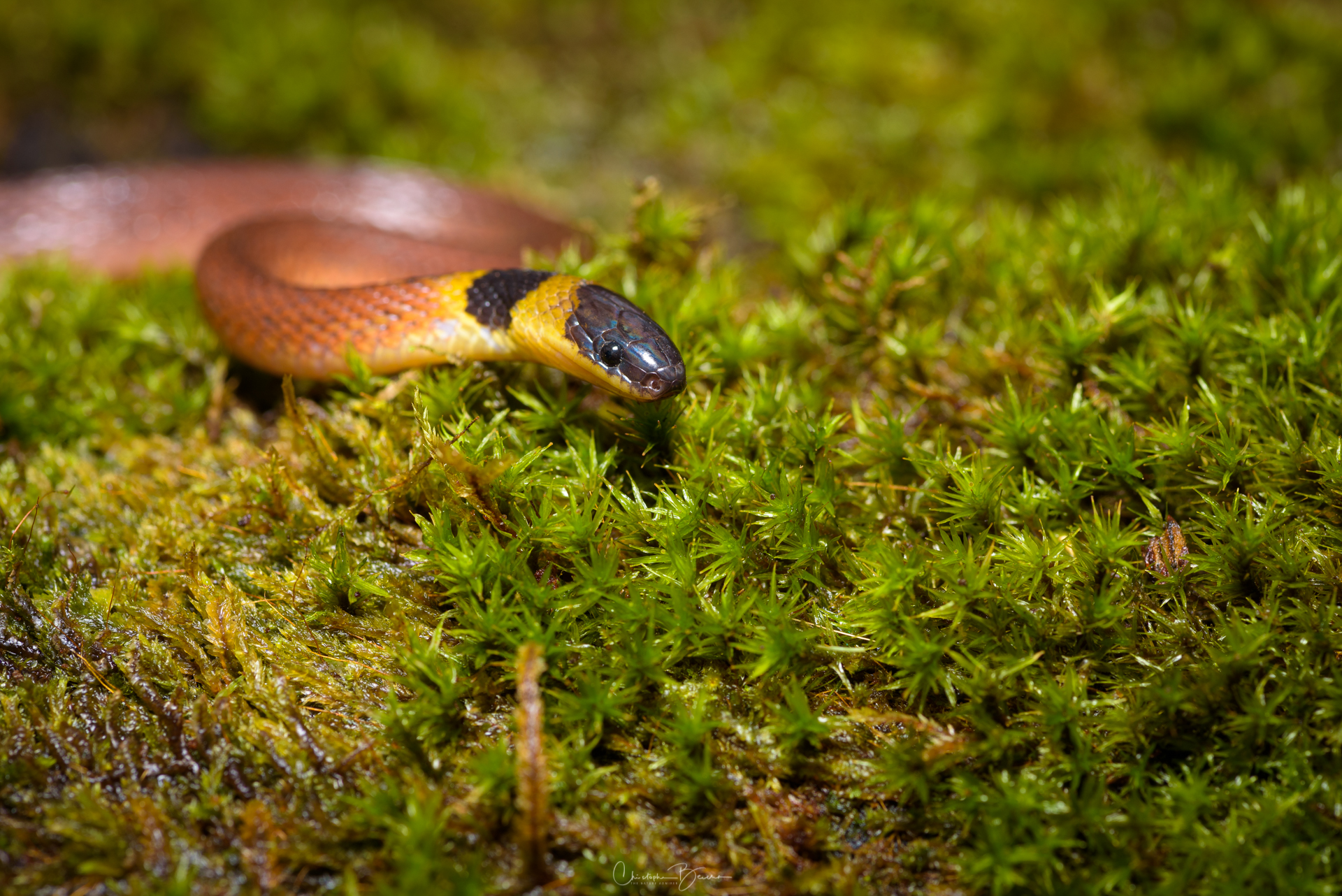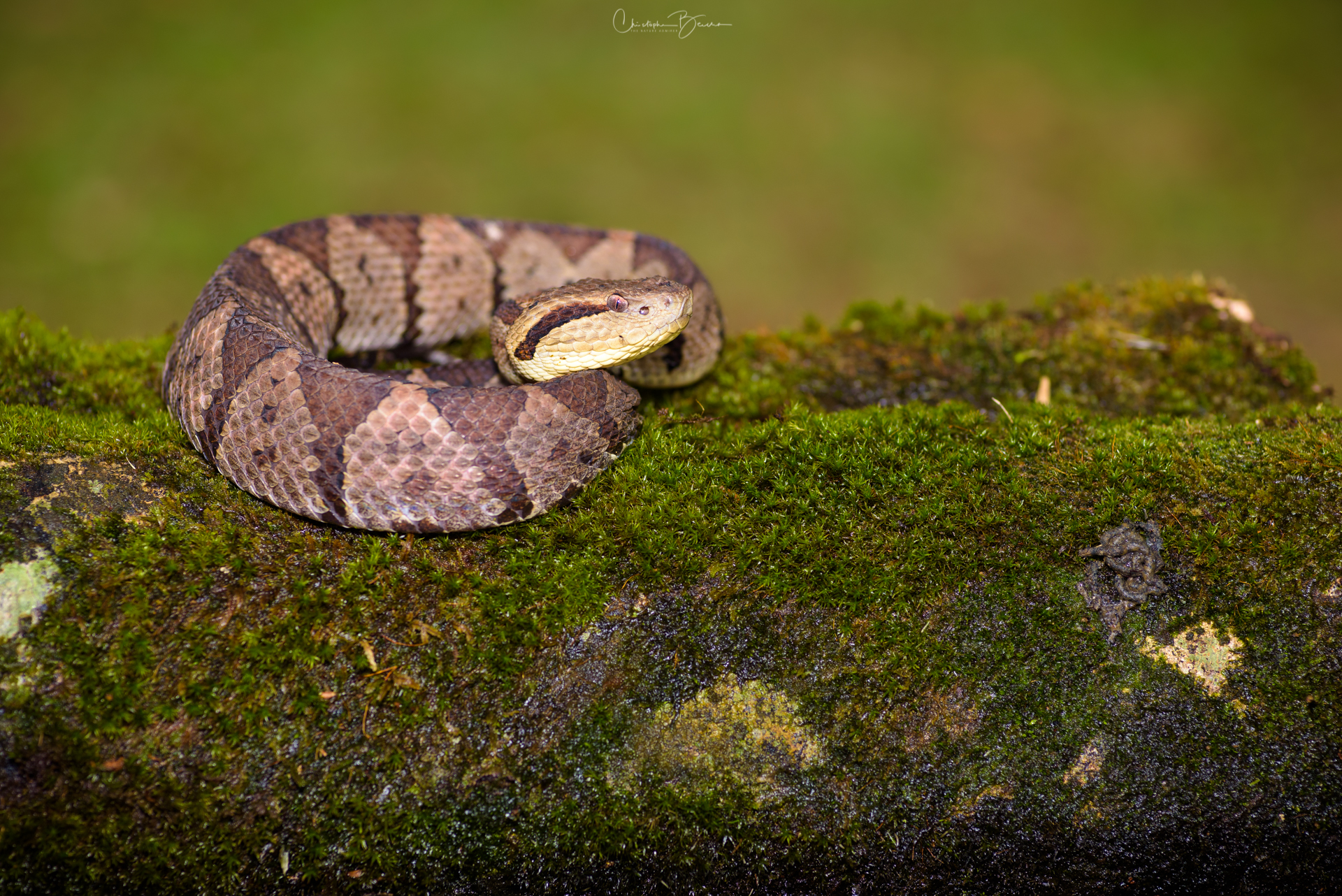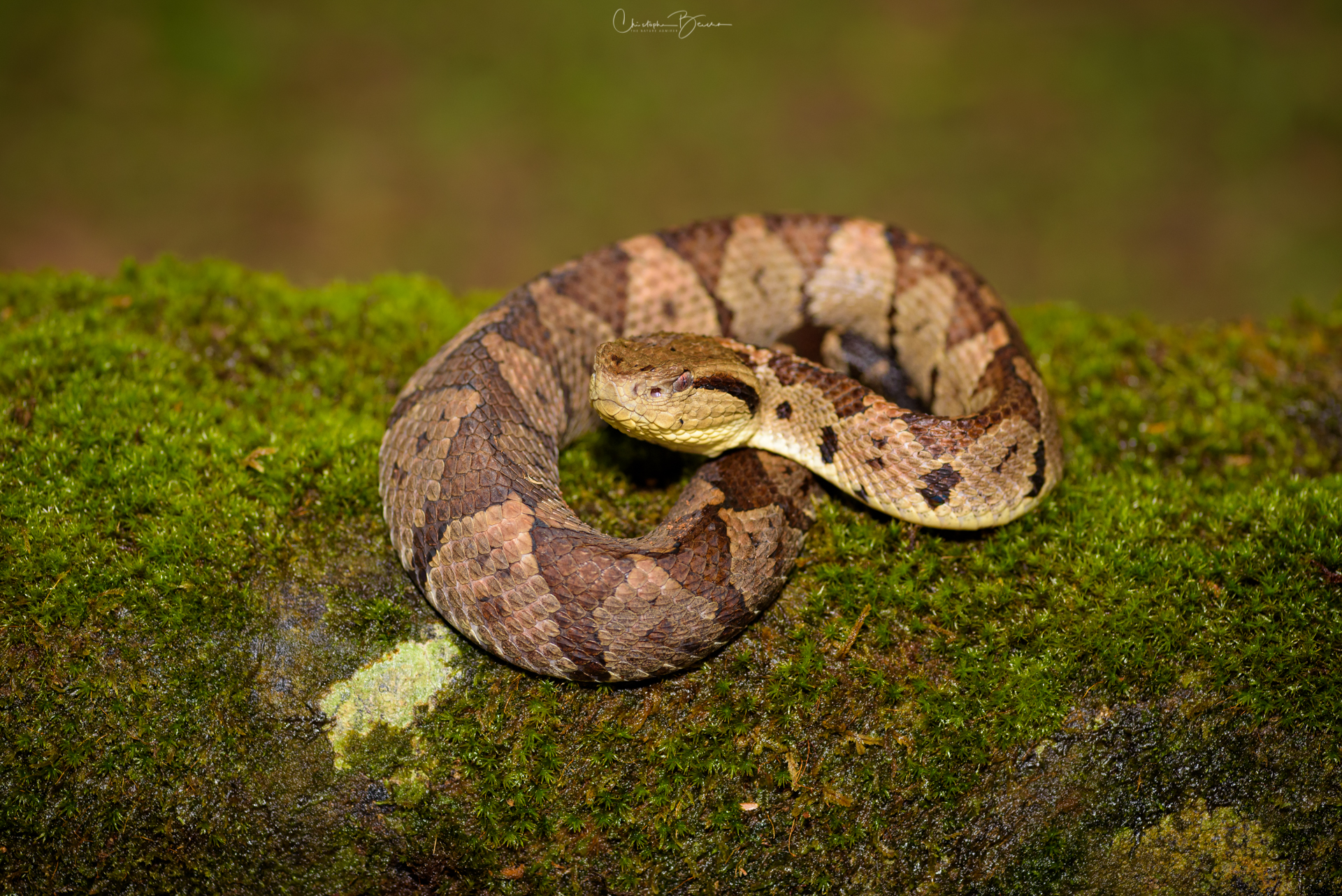Stream Anole (Anolis oxylophus)
There is always a back story for every picture that I take, and this might be one of the most amusing. I hiked early in the morning with all my gear to a rapids section of a river at Kinkajou Tropical Reserve, close to Yatama Ecolodge where I was staying. I kept thinking about how dragging all that equipment was not worth it; after all the trail was all muddy and the vegetation had encroached itself to make passing through difficult. After I had finished with the landscape pictures, I was talking to my guide close to a rock at the river’s edge, when I saw an orange flash come out of a branch. When I paid attention, I saw this anole, head raised and dewlap extended, probably displaying for a nearby female that we could not find. I had read about the Stream Anole in the Reptiles of Costa Rica: A Field Guide book by Twan Leenders, but it never crossed my mind I would find it that day without searching for it. All of a sudden, carrying all that weight on my back was entirely worth the trouble.
